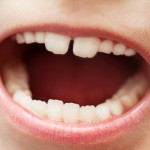
In recent years otolaryngologists have noted increasing referrals for upper lip frenectomy to potentially improve an infant’s ability to breastfeed. Some referrals are linked with aesthetic concerns associated with maxillary midline diastema.
The aim of this review was to provide information about the association between a superior labial frenum and maxillary midline diastema.
Methods
Searches were conducted in the Medline/PubMed, Embase, Web of Science, Cochrane Library and DOSS (Dental and Oral Sciences Source) databases by a medical librarian. English language cross sectional studies describing associations between superior labial frenum, and the maxillary midline diastema published after 2000 were considered. Two reviewers independently screened and selected studies and extracted relevant data. A narrative summary was presented.
Results
- 11 studies involving a total of 5671 patients was included.
- Sample sizes ranged from 100 to 1355 patients.
- A number of difference classification systems for frenal attachment were used (Kotlow’s classification, the Stanford superior labial frenum classification, Sewerin’s typology and Placek’s labial frenum attachments).
- Studies identified different types of maxillary frena eg. mucosal, gingival, papillary and papillary penetrating. Simple forms of frenum were most common although prevalence varied across the studies. Variation in clinician assessment was also considered to be occurring.
- Findings suggest that frena migrate with age with more extensive frena being seen in younger children
- Diastema were less common in patients with simple frena and most common in those with papillary penetrating frena.
- Other causes of midline diastema included, thumb sucking, missing teeth, supernumerary teeth, tooth size, teeth angulation and other odontogenic causes
Conclusions
The authors concluded: –
…two subtypes of frenum: papillary and papillary penetrating frenum, are associated with maxillary midline diastema. Superior labial frenectomy should be delayed until permanent lateral incisors have erupted, as this can spontaneously close the physiological MMD. Current literature recommends against frenectomy before addressing the diastema with orthodontics, which helps to prevent diastema relapse. It is also imperative to rule out other odontogenic and oral cavity causes of diastema, such as thumb sucking, dental agenesis, and other causes. Online information may not always be fully representative and should be interpreted in the full context of the patient’s medical history before referral for surgical intervention.
Comments
A medical librarian undertook a search of a good range of databases for this review however restriction to the English language could have excluded some relevant paper. As a number of different classification systems for frenal attachment were used and age ranges of the included patients varied no quantitative analyses was presented. A good narrative summary of the included studies together with details tables was provided. However, as all the included studies are cross-sectional, they do not address the question of closure of diastema after frenectomy. They do quote one small study (Suter et all.,2014) which suggest that in patients with prominent frenum closure is more predictable with frenectomy and concomitant orthodontic treatment than with frenectomy alone. Furthermore, division of the frenum prior to orthodontic treatment may result in scarring and lead to diastema relapse. Future studies would benefit from agreement and common use of a single frenum classification system and well conducted prospective studies.
Links
Primary Paper
Tadros S, Ben-Dov T, Catháin ÉÓ, Anglin C, April MM. Association between superior labial frenum and maxillary midline diastema – a systematic review. Int J Pediatr Otorhinolaryngol. 2022 Feb 26;156:111063. doi: 10.1016/j.ijporl.2022.111063. Epub ahead of print. PMID: 35248905.
Other references
Suter VG, Heinzmann AE, Grossen J, Sculean A, Bornstein MM. Does the maxillary midline diastema close after frenectomy? Quintessence Int. 2014 Jan;45(1):57-66. doi: 10.3290/j.qi.a30772. PMID: 24392496.
